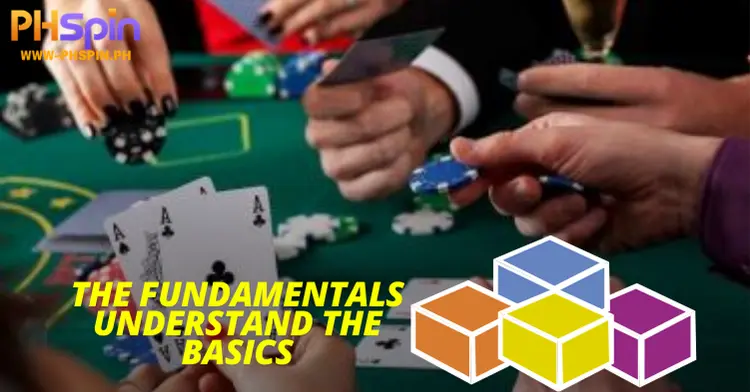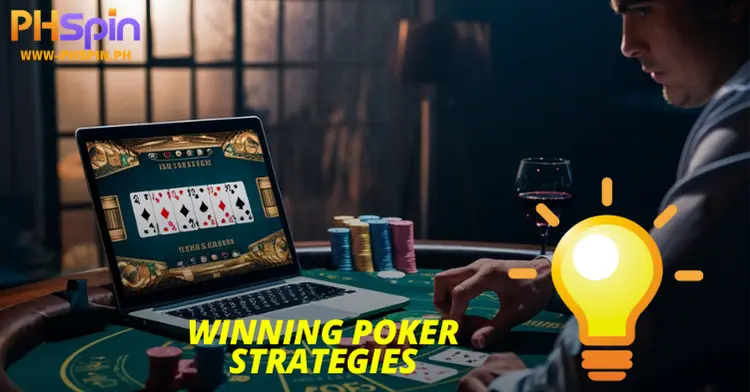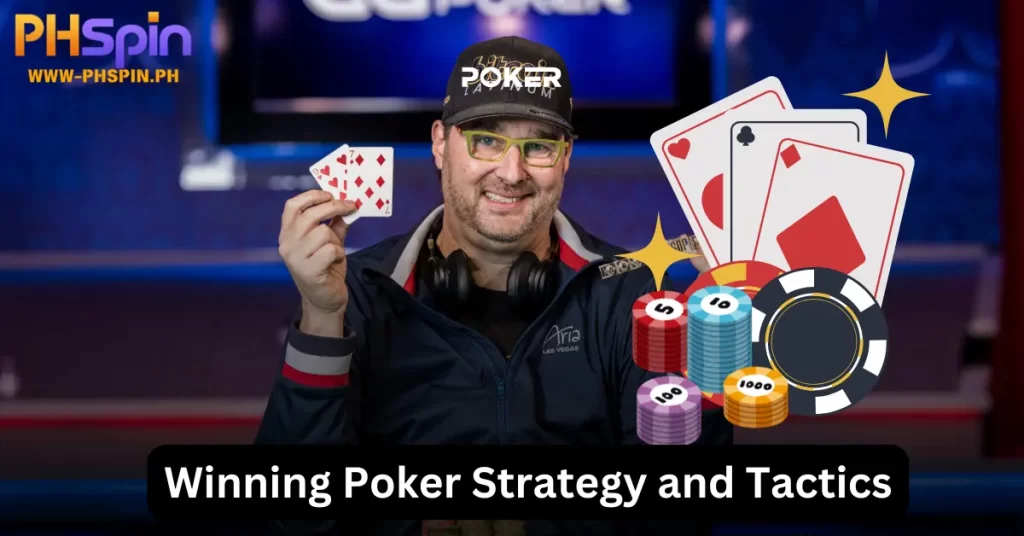Have you ever noticed that it seems the same names are consistently at the top of tournament leaderboards, or who the poker media are talking about crushing cash games?
It’s no accident. These players are just as lucky as anyone else. They’re highly skilled players with an arsenal of Winning Poker Strategy and tactics to draw upon. Platforms like Tapwin partner with skilled players, offering tailored resources and tools to refine poker strategies, enhancing players’ capabilities to achieve long-term success in tournaments and cash games.
To master poker much more is needed than luck alone; it is a game that requires knowledge of the right moves, risks taken, and insight into the psychology of the players. Successful players combine a set of tactics that can be learned, refined, and modified by any keen player.
In this section, PHSPIN will dissect some of the winning strategies and tactics employed by top players to help you chart a roadmap to improve your skills and gain that essential edge at the poker table.
The Fundamentals Understand the Basics of Winning Poker Strategy

It is more desirable to be able to discuss a couple of basic strategies and principles of poker before heading on to the advanced tactics. Fundamentals form a strong foundation for playing poker and help develop the player’s personality in terms of being disciplined in this respect while their circle widens by learning more intricate strategies.
Hand Selection
In poker, the hands you select to play have a big impact on your long-term results. Professionals are normally choosy or folding-weaker hands rather than playing every hand. A good strategy for selecting hands would include considerations of position, type of game, and opponent behavior. Make sure to play strong hands-like pairs or high cards in an early position, but later in position, you can ease up a little when you get more of an idea of other players’ actions.
Positional Awareness
Position in poker is everything. A player who acts later in a round can observe others’ actions and base his decisions on those. In general, skilled players play tighter in early positions and switch to a looser range when the position is later. Understanding your position and making informed decisions based on it are the keys to an edge.
Bankroll Management
An important part of winning poker strategy is that success in poker requires continuous intelligent bankroll management. Even really good players have a number of losing sessions throughout the year, so having a budget for your poker activities helps you stay within it and ensure that downswings won’t knock you out of the game. Pros generally suggest having a bankroll at least 20-30 times the maximum buy-in for cash games and 50-100 times for tournaments.
Winning Poker Strategy: Taking Your Game to the Next Level
While it is good to know the fundamentals of poker, mastering it requires a fair deal of advanced strategy. Here’s a breakdown of some of the truly effective ones that pros rely on when they win consistently.

Aggressive Play with Selected Hands
One of the features that sets professional poker players includes being in a position to play more aggressively when they have a strong hand. It simply entails more betting and raising than calling and checking for the purpose of pressuring opponents. Aggression in poker makes you lead the game and forces the weaker hands to fold. Simultaneously, this is balanced with restraint, applied to carefully selected hands.
Example: You are on pocket Aces. Instead of slow-playing and giving a chance to others to outdraw you, raising or re-raising from the very start makes weaker hands fold, thus improving your winning pot odds.
Bluffing and Semi-Bluffing
Bluffing is a major side of poker, as it’s one of the few ways you can win pots when you don’t have the best hand. To bluff right, however, you need to time your bluffs correctly, know whom to bluff, and have a table image that is similar every time. Another related but very important concept is semi-bluffing, where you are betting with hands that have the ability to improve. A great strategy to put pressure and still have a chance of drawing out a winning hand.
Example: On the flop, you have an open-ended straight draw. A semi-bluff allows you to bet and possibly win the pot right there. Even if that doesn’t happen, there is a decent chance the hand will get better either on the turn or river.
Reading opponents and adapting
Reading opponents is a vital skill in poker. Betting patterns, body language, and timing can give away some information about the opponent’s hand. If a conservative player suddenly bets more, they may have an ace. By paying attention to opponents’ tendencies, you can adjust strategy in light of the information provided to your calling, folding, or raising accordingly.
Balancing Your Play to Avoid Predictability
More experienced players understand that a little balance goes a long way: Constantly playing in predictable patterns makes it much easier for more skillful opponents to read you and counter your moves. To balance up, pros may sometimes bluff or call in spots where they normally wouldn’t, for the simple fact that this will make them less readable.
Tip: If you are the type of person who folds in certain situations quite frequently, then every once in a while, call or raise just so people keep guessing about what you may be doing.
The Value Bet
Then, of course, there is also the value bet or another tool in a professional’s arsenal for building up big wins: the technique of betting on the hand but hoping others will call with weaker hands. The idea is to squeeze the most value possible from those opponents who feel that they still have some hope of winning the hand.
Example: You are holding the top pair with a strong kicker on the river. A bet here v. checking can get more chips from an opponent who has the second-best hand.
Pot Odds and Expected Value (EV)
Advanced players understand things like pot odds and how to determine the expected value, EV, of a play. Pot odds is the ratio of the current size of the pot to the cost of a contemplated call. You will be aware of your odds of completing a hand, thus allowing you to make more informed decisions.
If the pot odds are better than the odds of completing your hand, then calling can be the correct decision. EV is a mathematical calculation of just how profitable a move will be in the long run. Positive EV moves are long-term profitable moves, while negative EV moves are best avoided.
Example: You’re drawing to a flush, and the pot is offering you 4-to-1 odds. Knowing approximately that the chance you make your flush is around 4-to-1 will help you make a call.
Psychological Tactics Used by Pros
Professional poker players, at times have to use psychology to their advantage during their games of poker. This is one of the distinguishing features that differentiate the really good player from the average one.
Building a Table Image
An image of the table is how your opponents view your playing style. If you’ve created a tight, conservative image, you may be in a position to bluff with success. On the other hand, being in a lower, aggressive situation may, at times, make opponents fold to give you what appears as a strong-appearing hand. Advanced players manipulate their image to create desired responses to their actions.
The Art of the Check-Raise
A check-raise is one of the most powerful psychological tools that you have in most hands. You are checking on your turn to invite the opponents to a bet for you then raise them subsequently. It is a sign of strength that makes the opponents fold marginal hands many times.
Example: You’re on the big blind with a good hand and check after the flop. When an opponent reaches for a bet, you can then raise, putting pressure and more than likely increasing the pot.
Patience, Control of Emotions
Patience and discipline are cornerstones that hold a winning poker strategy. Even good players go through some sort of a losing streak. As a professional, he would instead play methodically, waiting for those profitable situations. Mistakes usually come through emotional decisions. Therefore, it is very important to be patient and disciplined to have long-term success.
Don’t just focus on Winning Poker Strategy, you should also know the Common Mistakes to Avoid in Poker Strategy.
Final Thoughts Winning Poker Strategy
Winning Poker Strategy requires a lot more than simply understanding the game. It involves calculated strategies, patience, and reading and adapting to opponents. Try these winning poker game strategies at the PHSPIN Casino. From the selection of hands appropriately to aggressive plays, mastering the art of bluffing and psychological tactics, these approaches are an excellent advantage at the table.
Remember, consistency is the driving force for both discipline and confidence. By enacting this blend of strategies and employing adaptation, your likelihood of success is enhanced, as you will be nearer to the level of proficiency that professional players display.

